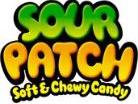Popping Pop-Rocks and Mentos candy into your mouth may be a sweet treat to enjoy, but did you know there are other fun things you can do with candy? From a colorful geyser to mixing candies in water to exploring whether candy will sink or float, candy of all types can be a tasty way to learn about science and math.
So, instead of eating all of that sugar around Easter, Christmas, and Halloween, try putting some of it to good use through science. First, gather up a bunch of different types of candies and fill a bowl with water. Then, spread out all the candies and consider each one. Make a prediction for each candy about whether it will sink or float. Then, test your prediction by placing it into the bowl of water to see if you were right. Ask yourself why some candies sink while others float.
While you’re trying out your prediction skills, see if you can guess how many licks it will take to get to the middle of a Tootsie Pop. If you have several people predicting, you could even make a bar graph to show everyone’s guess, using a different colored bar for each person. Then, pass around the candy so everyone can get busy testing out their lick predictions. As it turns out, some students at Purdue University actually built a licking machine for this very purpose. Their machine helped them figure out that on average, it takes 364 licks to get to the middle. How did you average – did it take you more or less than 364 licks?
It can be fascinating to dissolve different types of candies. If it’s Halloween and you have some of those candy corn pumpkins, try dissolving them in different liquids such as vinegar, oil, milk, and water. First, make a prediction about which liquid will dissolve the pumpkins first. Then, fill cups with each liquid and place a pumpkin in each. Next, watch the cups to see what happens to the pumpkins. After several minutes, you could also remove the pumpkins to see if changes continue to occur. Make some guesses about why the different liquids affected the pumpkins as they did. What would happen if you used warmer liquids, stirred the liquids, or tried using different candies? Draw pictures of the different candies in the different liquids.
You could also try mixing up your own candy potions using different candies. Gather some test tubes and fill them about half-way with water. From there, it’s up to you to choose various candies to add to the test tubes to see what happens. You might try putting candies in whole or grinding them up into a powder. Do the candies dissolve and color the water? What happens if you add different colored candies to the same test tube? What color does the water turn? For a related activity, use Skittles to make a density rainbow. Fill cups with a tiny amount of water and add one color of candy to each glass to dissolve them. Once the candies dissolve, you should have small amounts of brightly colored water. Carefully pour the liquid from one cup into another cup to avoid mixing the colors, repeating with each cup so all the colors are in one cup. You should get a rainbow of colors with each color resting on the one below it.
Grab a handful of M&M candies and fill a cup with water. Place the candies into the water and observe how long it takes for the little white “m” on each candy to disappear. Do they disappear at the same rate, or is one color faster or slower than the rest? What color are the M&M candies under the outer color layer?
Explore these websites with fun science experiments using your favorite candies:
- Candy Bar Dissection (PDF)
- Do Skittle Colors Mix in Water?
- M & M Candy Experiment (Video)
- Candy Experiments
- Balloon Experiments With Candy
- Edible Solar System Cake
- Growing Gummy Bear Science
- 10 Awesome Candy Experiments for Kids
- Candy Chromatography
- Make Your Own Coke & Mentos Geysers
- Science Projects That Have to Do With Pop Rocks
- Oil Test
- 15 Amazing Candy Science Experiments for Kids
- Halloween Science: Frankenworms
- Pop-Rocks
- The Skittles Candy Science Experiment
- Dissolving Gobstoppers
- Sink or Float Candy Science
- Exploding Peep Geysers
- Mentos Candy
- A Sticky Situation: Chewing Gum and Solubility (PDF)
- How Much Sugar Is in Bubble Gum?
- Conservation of Mass Gum Lab
- Make Mouthwatering Candy Melt
- Make Gummy Worms (PDF)
- What’s That Stuff?
- The Science Behind the Perfectly Toasted Marshmallow











